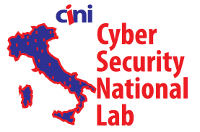T-NOVA
T-NOVA

Current networking infrastructures basically rely on hardware-based devices as their building elements; most in-network functionalities (routing/switching, filtering, analysis, adaptation, signaling control, security provision etc.) are carried out by stand-alone hardware appliances. This approach, while having worked well for several decades, is now seen as a major factor which contributes to the so-called “ossification” of the Internet. Solely relying on hardware platforms with fixed resources/capabilities, significantly slows down and hampers the introduction of new network services. The advent of network innovations in the context of Future Internet (new protocols, algorithms and standards) calls for continuous upgrades (or even replacement) of the existing appliances in a much faster pace than their average lifetime.
In this context, Network Functions Virtualisation (NFV) appears as an emerging aspect in the networking domain, which has the potential to radically redefine the substance of what is referred to as “network infrastructure”. NFV refers to the virtualization of network functions carried out by specialized hardware devices and their migration as software-based appliances, which are deployed on top of commodity IT (including Cloud) infrastructures
The T-NOVA project aims to address the aforementioned NFV challenges by designing and implementing an integrated management architecture, including an Orchestrator platform, for the automated provision, management, monitoring and optimization of Virtualised Network Functions over Network/IT infrastructures. T-NOVA leverages and enhances state-of-the-art cloud computing management frameworks for the elastic provision and (re-) allocation of IT resources assigned to the hosting of network functions. It also exploits and extends Software Defined Networking aspects, focusing on the Openflow technology, for efficient management of network resources, including network slicing, traffic redirection and QoS provision.




